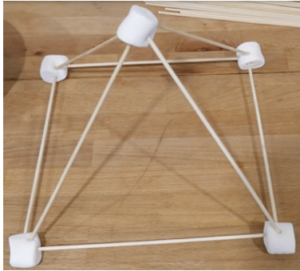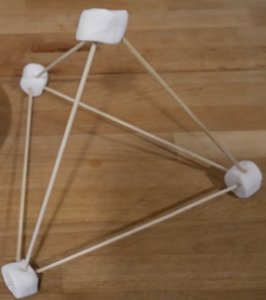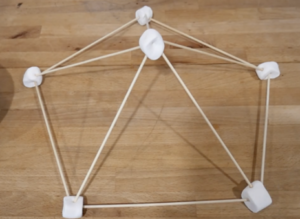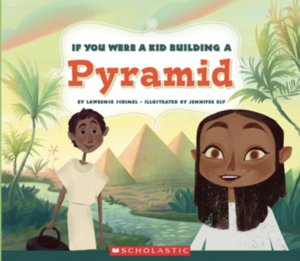World Culture Activity: Pyramid Architecture
Build a pyramid inspired by the pyramids found all over the world!
Activity best for children age 2 and up
One interesting kind of architecture that you can find many examples of in different cultures is … the pyramid! Did you know there are pyramids outside of Egypt? They can be found all over the world, including in Mexico, Sudan, and Cambodia. Most pyramids look like mountains and are not built to live in. They are usually built for special purposes like protecting a king, holding a temple, or because they are pieces of art.
Pyramids are made of 3 main parts: the base (bottom), face (side), and apex (top). Did you know there are different kinds of pyramids? It depends on the shape of their base, where their apex is, and if the sides are the same. They can be square, triangular, pentagonal, right or oblique, and regular or irregular. To be a right pyramid, the apex must be in the middle. To be a regular pyramid, the sides need to be equal. Join me in a marshmallow-toothpick building challenge!

Materials You’ll Need:
Marshmallows
Toothpicks
Guiding Questions:
As you construct your own pyramids, think about how they can vary based on three key elements: base, face, and apex.
What has to happen for a pyramid to have a different base? What else changes when you change the number of sides of the base?
Directions
STEP 1
Make a regular square pyramid.

STEP 2
Make a triangular pyramid.

STEP 3
Make a pentagonal pyramid.

STEP 4
Explore! Can you make an oblique or irregular pyramid?
Grown Ups-Are you looking for more ways to extend your child’s learning? Check out these extension activities to build upon today’s STREAM activity!
Reading Connections:

If You Were A Kid Building A Pyramid by Lawrence Schimel
Math Connections:
Building three dimensional is a wonderful way for preschoolers to learn the basics of geometry and for older children to examine the fundamentals of structure stability.
Real-World Connections:
Building pyramids is a great way to learn about world culture and architecture throughout history!
Share your pyramids with us on Instagram by tagging @sdcdm320!
Questions about this activity? Email education@sdcdm.org

